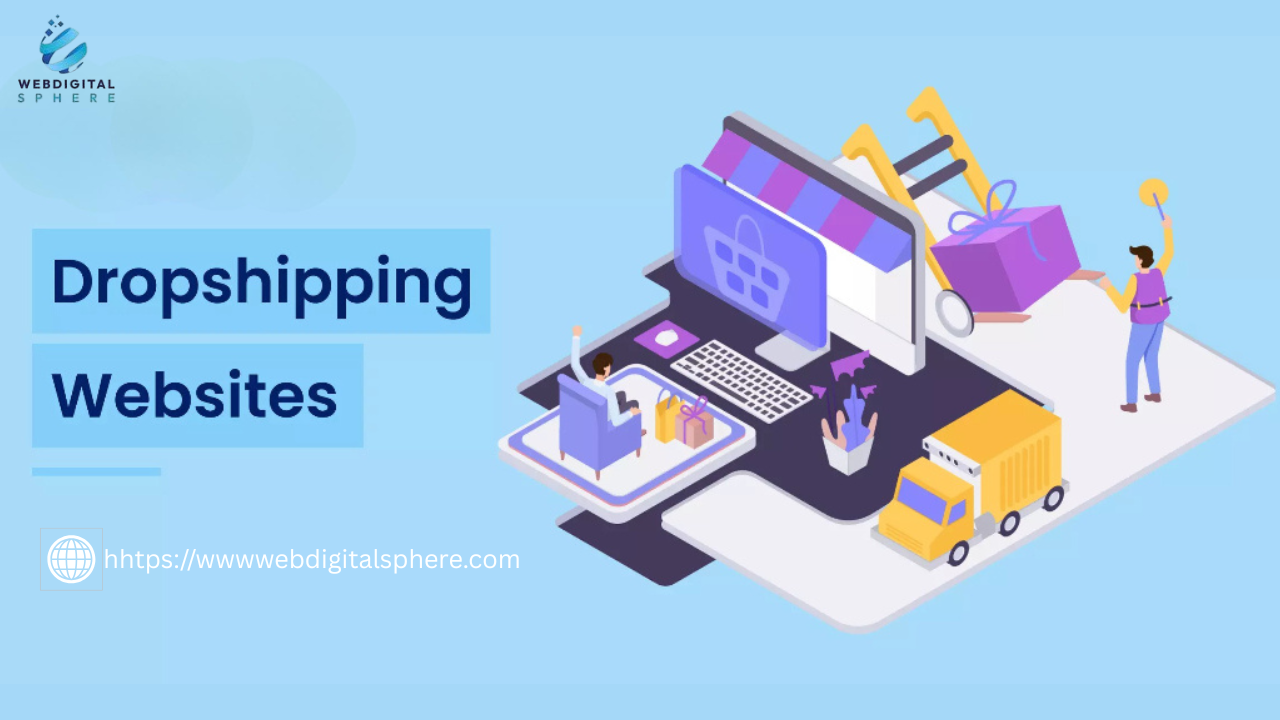The Ultimate Guide to Starting Your Own Dropshipping Website
Launch your online store with ease! This ultimate guide walks you through how to start a dropshipping website, choose the right niche, and grow your eCommerce business profitably.

Dropshipping is one of the most popular and low-risk ways to launch an online business. With no need to maintain inventory or ship products yourself, it's a smart option for entrepreneurs looking to enter the e-commerce space. In this guide, you'll learn everything you need to start your own dropshipping website, from choosing a niche to launching your store and making your first sale. Let's dive into the essential steps and strategies for success.
Dropshipping Actually Works
The dropshipping website allows store owners to sell products without ever handling them physically. When a customer places an order, it is forwarded to a third-party supplier who ships the product directly to the buyer. This business model eliminates the need for warehousing and large inventory investments. As a result, it lowers startup costs and risk, making it an ideal choice for beginners in e-commerce. Learn more by visiting our dropshipping website.
Choose the Right Niche for Your Store
Selecting a profitable and focused niche is key to dropshipping success. Look for products with steady demand, low competition, and healthy profit margins. Use tools like Google Trends, SEMrush, and TikTok to identify emerging trends and buyer interests. Avoid overly saturated niches unless you have a strong branding strategy or unique value proposition.
Tips to Evaluate a Niche Effectively
Begin by analyzing your target audience and their buying behaviors. Check social media platforms and product reviews to gauge interest and demand. Study your competitors strategies to understand whats working in your niche. Finally, validate profitability through keyword research and test listings before fully committing.
Find Reliable Dropshipping Suppliers
Your supplier is the backbone of your dropshipping business. Platforms like AliExpress, Oberlo, Spocket, and SaleHoo offer thousands of products you can add to your store. Choose suppliers with high ratings, fast shipping, clear return policies, and responsive communication. Test products yourself or order samples to check quality before scaling.
Build Your Dropshipping Website
Creating a professional-looking website is essential for building customer trust. Use platforms like Shopify, WooCommerce, or BigCommerce, which are beginner-friendly and dropshipping-compatible. Choose a clean theme, optimize your product pages with clear descriptions, and ensure mobile responsiveness. Add trust badges, customer reviews, and secure payment gateways.
Optimize Your Website for SEO
Search engine optimization (SEO) helps your store get found organically. Use relevant keywords in your product titles, meta descriptions, and blog content. Optimize site speed, include alt text for images, and create an SEO-friendly URL structure. Consider publishing regular blog posts related to your niche to build authority and rank higher in search engines.
On-Page SEO Tips for Dropshipping Websites
Start by crafting compelling and keyword-rich product titles and descriptions. Use H1, H2, and H3 tags strategically across your website pages. Compress images for faster loading and ensure all content is mobile-optimized. Internally link related product or blog pages to improve crawlability and user experience.
Set Up Payments and Shipping Policies
A smooth checkout experience boosts conversion rates. Integrate trusted payment gateways like PayPal, Stripe, and local options. Clearly display your shipping times, costs, and return policies to avoid confusion or disputes. Offer multiple shipping options to cater to different customer needs, including free shipping for added value.
Develop a Marketing Strategy
Marketing is the engine that drives traffic and sales to your dropshipping website. Use social media platforms like Instagram, Facebook, and TikTok to create brand awareness. Invest in paid ads, influencer marketing, and email campaigns to reach your target audience. Track your performance using tools like Google Analytics and Facebook Pixel.
Test, Analyze, and Improve
Dropshipping success requires constant testing and data analysis. Split-test your product titles, descriptions, and ads to see what converts best. Use analytics to monitor traffic, conversion rates, and customer behavior. Make data-driven decisions to optimize your website, improve product offerings, and scale your business effectively.
Conclusion
Starting a dropshipping website is one of the smartest ways to launch an online business with minimal risk. By choosing the right niche, working with reliable suppliers, optimizing your store, and executing a strong marketing plan, you can build a profitable brand in the e-commerce space. Remember, consistency, patience, and ongoing learning are the keys to long-term success.
FAQs
Q1: Do I need a business license for dropshipping?
It depends on your country and platform. Some marketplaces require a license, while others dont. Its best to check local regulations.
Q2: How much does it cost to start a dropshipping website?
You can start with as little as $100$300 for domain, hosting, and basic tools, but scaling requires more investment over time.
Q3: Can I run a dropshipping business from anywhere?
Yes, as long as you have internet access and a laptop. Dropshipping offers complete location freedom.
Q4: What are the risks of dropshipping?
Supplier issues, shipping delays, and high competition are the biggest risks. Choosing quality partners and niches can reduce these.
Q5: How do I handle returns and refunds in dropshipping?
Work with suppliers that offer clear return policies, and make sure your website outlines the process to customers clearly.









































